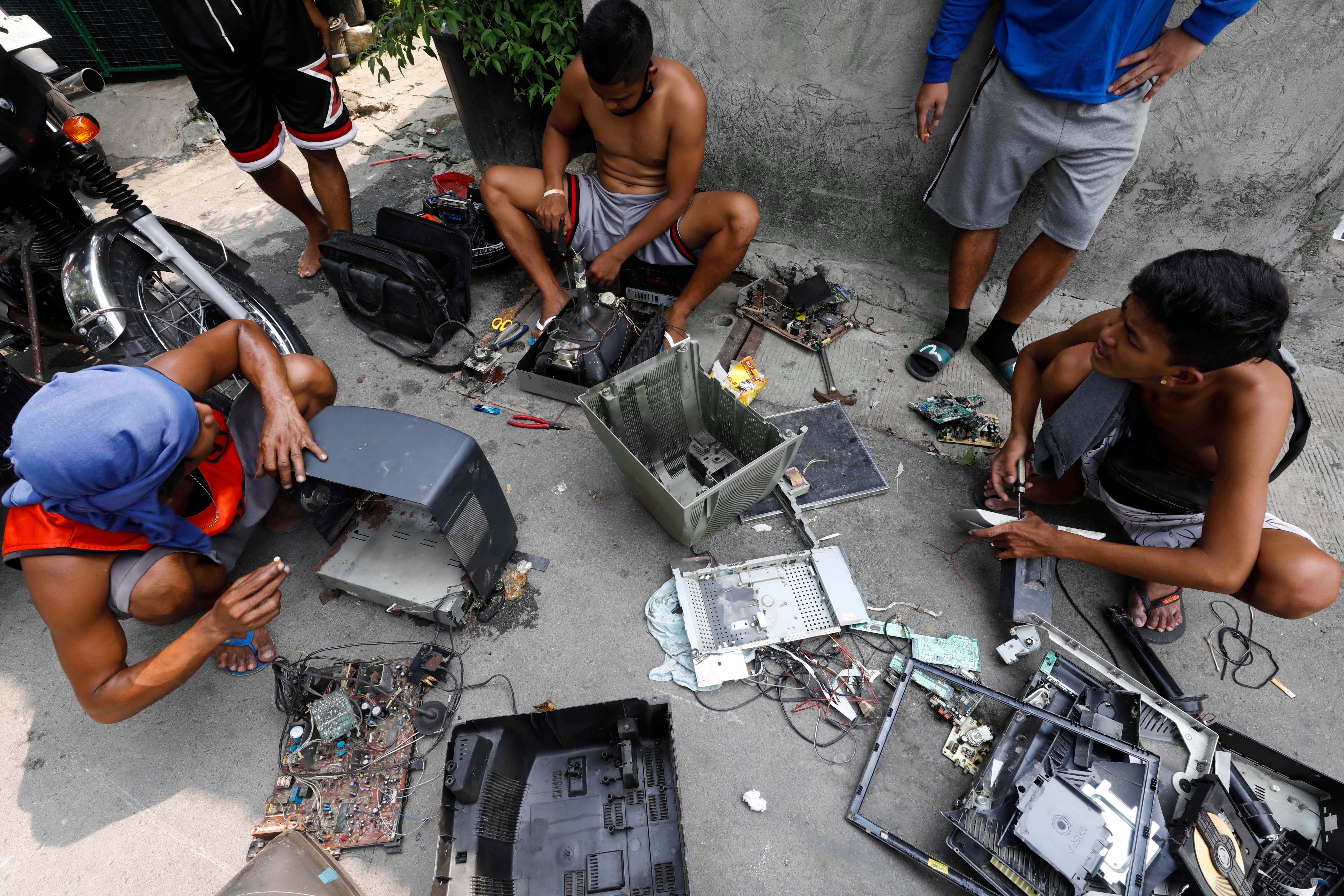My carbon footprint: just call me a luddite
The e-waste mountain threatens us all. So no, I’m not going to spare the feelings of the playground bullies, says Kate Hughes


I guess it was only a matter of time before one of us got grief for our not-quite-this-week tech. I just wish it had been me and not one of the kids. From another kid.
Don’t you worry, I’ve got plenty to say to their ‘responsible’ adult, but in the meantime the acerbic criticism of one so young has thrown up all sorts of chat about why the kids go to school with – and why we work on – second-hand, refurbished and repaired technology, especially from the seven-year-old, whose teacher now expects her to bring “a device” into class with her. (When did a device stop meaning a natty gadget Q created for 007, anyway?)
Setting aside the obvious question of why today’s kids can’t possibly be taught without the aid of 400 different apps, it’s the first time she’s been exposed to the great tech comparison that will now sadly, but inevitably, last for the rest of her life.
She, and therefore we, have been found wanting. But I’m intensely proud of that.
First, because I’m told she gave the snotty-faced little aggressor what she, and her personal hero Paddington Bear, would describe as a “hard stare” before dismissively skipping off.
Second, because we’ve saved a fortune in the last few years by ignoring the empty call of the latest iphone. Or tablet. Or games console. Or laptop. Or smart speaker. Or smart watch. Or the kettle for that matter. You get the picture.
(I’m writing this on a second-hand effort that was rejected by a mother-in-law who thought the latest gadget might magically solve her tech phobia. Happily for me, at least, it didn’t touch the sides.)
Third, though – and this is the biggie for me – because by using refurbished and repaired items, we aren’t adding anywhere near as much as we once did to the mountain of e-waste produced by this small island every year.
It really is a mountain, too. In fact, the UK is one of the biggest producers of e-waste in the world.
We’re talking anything with a cord, plug, battery or electrical component of any kind. That’s vacuum cleaners and kids toys, the keyboard and the toaster, and everything in between.
Even before they’ve left the production line, creating the average computer and monitor has required at least 4,250 litres of water, 22 kgs of various chemicals, and 240 kgs of fossil fuels.
And yet even before that new-gadget smell has fully dissipated (a process called offgassing – look that one up, it isn’t great either) we have already started to see these things as diminished.
In the UK we buy around 1.7 million tonnes of electronics and electrical equipment every year, according to government figures. Barely 10 per cent of it is used by more than one person.
Even by 2017, the latest figures available, half a million tonnes of discarded e-waste was collected by the waste electrical sector, another 155,000 tonnes was chucked in skips, with no evidence as to what happened to it after that, and 145,000 tonnes went in our wheelie bins.
Up to 209,000 tonnes of e-waste were illegally exported from the UK to countries including India, Ghana and Nigeria, including items “officially collected at local authority sites”.
They are all massive numbers but they all stem from one stat – that we produce almost 24 kgs of e-waste per person per year. It’s significantly more than is produced by the USA, and more than five times the amount produced in most Asian countries, for example.
If we dump our e-waste, toxins leach into the soil and water course, and if we recycle it, which is rarely the panacea we desperately believe it to be, we’re only really exporting the problem.
Oh, and that right-to-repair legislation that means manufacturers have to make spare parts available? It’s a lovely little Cop26 box-ticking exercise, though unfortunately in our homes it only covers dishwashers, washing machines and dryers, fridges and freezers, TVs, and other electronic displays. No other tech.
Even if an item is covered, it’s nonsense without the skills to actually do the repair.
My other half, thankfully, is a mechanical engineer, whose idea of a great night’s entertainment recently was stripping down the washing machine. I blame Covid.
But I’m ashamed to admit I don’t know one end of a rewired plug from the other. Do you? No wonder the local repair cafe has queues around the church hall every third Saturday of the month.
An isolated adjustment isn’t going to stop this little island drowning in its own e-waste when we can’t ship it to anybody else’s backyard any longer, and yet every advert is still screaming at us that the only way to live our best lives is by leaning on the crutch of shiny new tech.
This, like so many aspects of modern consumption, is utter madness. Stop the recycling tanker, we’re getting off.
Are we dismissed as luddites in meetings or the pub when we pull out an old Fairphone rather than an iphone 13, or 25 or whatever version they’ve tweaked very slightly to make us pay for it all over again? Maybe. But if we’re judged on the basis of our tech by our clients, or bosses, or friends, I’m not sure I want those clients or bosses or friends.
Far more importantly, are the kids going to somehow fall behind socially, or at school, or in the jobs market because their “device” wasn’t bought in a demented rush to be the first to have the latest whatever, cheered on by overstimulated shop assistants?
No. No, I really don’t think they will.






Join our commenting forum
Join thought-provoking conversations, follow other Independent readers and see their replies
Comments